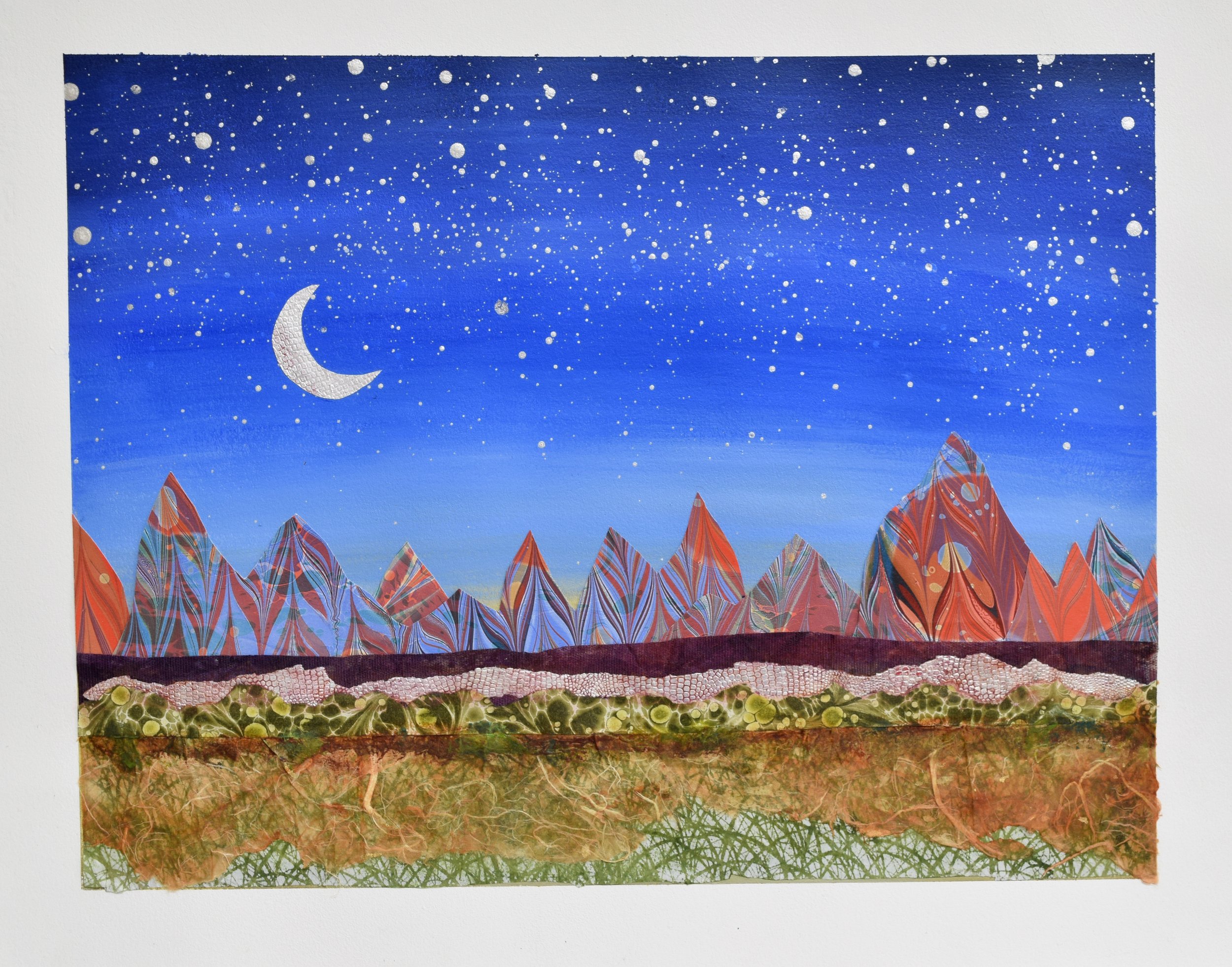The Art (and Science) of Sandra Duran Wilson
Is it art, or is it science? Perhaps it is both. To say that Sandra Duran Wilson's art is out of this world is not a symbolic statement: An image of her work is currently onboard NASA's OSIRIS-REx spacecraft, as part of a project created for the public to have expressions of their creativity carried on an expedition to the asteroid Bennu. It seems incredibly fitting since Wilson has always walked the line between art and science. Both disciplines attempt to understand and explain the world around us, so maybe they are not different after all. In a recent conversation with the artist, she shared her history, artistic process, inspiration and more. A fascinating story, told in her own words:
Beginnings
“I grew up on the border of Mexico, and my father and his brother were both physicians. My mother was a nurse, which meant that my parents also worked with native healers. My great aunt taught me how to paint, and at the same time, I would look through my father's microscope. I would paint what I saw, which was abstract, so I studied traditional oil painting on one side from a young age and learned science from another. I always liked mixing both.
Art and science are the same things in so many ways. I spent many years doing outdoor art fairs here in Santa Fe, and I would meet a lot of scientists who were drawn to my works, and we would get to talk about science.”
Synesthesia
“Since I was young, I have listened to music and seen colors. It was an interesting perspective I had on the world. Not long ago, I read an article about it, and it said that synesthesia typically runs in the family. So it turns out my mom had the same sensations, and my nephew has them as well.
There is a traditional definition of synesthesia, and I don't believe mine fits into that. When I listen to the music, it's like a color light show that begins, and then I see the movement. It also comes up with numbers. I discovered this when I was doing some of my graduate work in cognitive science; I was working on analyzing data, and as I entered the numbers I would hear these songs in my head, so the numbers became songs in my head, and from the songs I would see the colors. I associate this more with frequencies because numbers and colors are frequencies, and so are the sounds.
Sometimes when I am painting, I don't listen to anything because I don't want to be influenced by the music. But then, sometimes, I experiment by creating music with a synthesizer program based on what I have painted. I have worked with musicians, and we have done some exciting collaborations.
I went back to school in my 30s. I got a degree in psychology from the University of New Mexico in cognitive science because I was so interested in how we view things and the concept of creativity.”
Travel
“I have been teaching for 15 years. I have written six art technique books, which has allowed me to travel by teaching workshops in many different countries. I have always loved to travel. Since I was little, I would get on a horse and run off into the sunset, and my mom would have to drive to the neighboring ranch to get me … I have hitchhiked through Mexico and Alaska. Now I travel more comfortably. Traveling is art, too. It will open your eyes to a new way of seeing.”
Inspiration
“Creative people have always surrounded me. I get a lot of my inspiration from science. For instance, I could be thinking about quantum physics or molecular space and how we can begin to use energy differently. You are telling a story through mark-making, shapes and colors. For me, the person who will interact with artwork is just as important as my motivation. I want to leave things for the viewer to enter into the world.”
Evolution
“I work on a surface as a painter, but I love the texture, so I continually build texture and depth on my pieces. In my earlier days, I did a lot of jewelry, so I did a lot of stone cutting, [and] you are looking at depth while looking at the stones. I wanted to bring that into what I was doing with painting, so I started incorporating pieces of cast acrylic and plenty of glass, and I would paint on both sides of that. After a while, I started working only with the plexiglass, which is how sculpture came about. I would say that acrylic painting is my favorite medium, although I love working with metals and earth.”
What is art?
“I think art is being fully awake. I believe art is seeing what's in front of you, but through your soul.”


